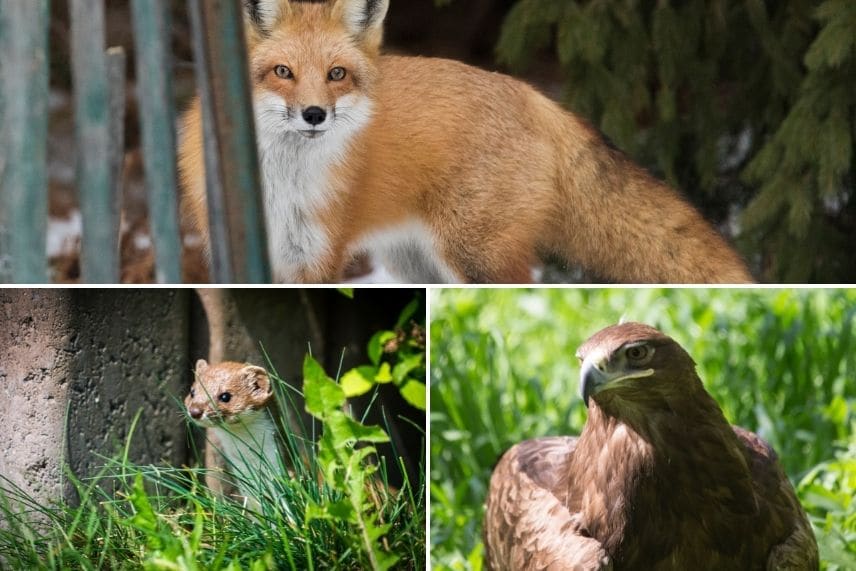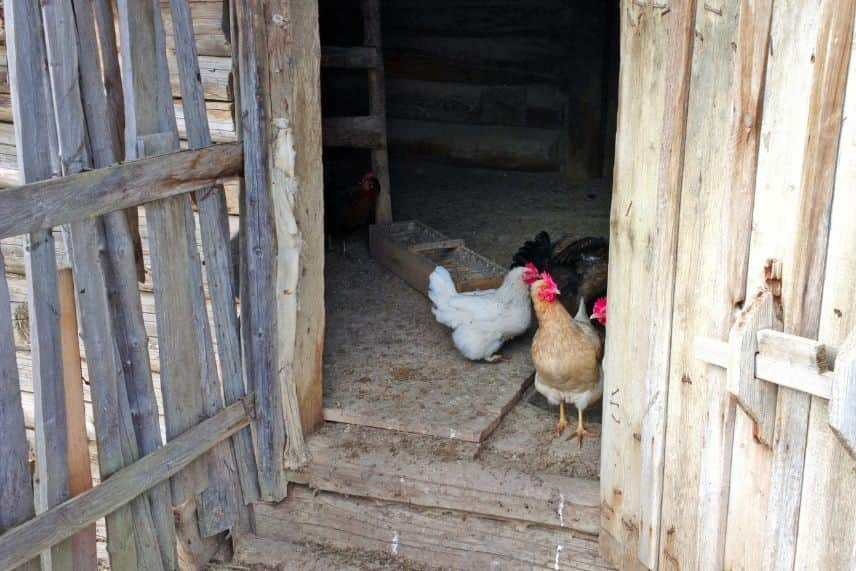
How to protect your chickens from predators?
All our tips to ensure the safety of your chickens day and night
Contents
Your hens, you love them, you pamper them, and you provide them with all the care they need. And they reward you by giving you fresh eggs every day. But then one day, disaster strikes. A fox, a weasel, or a buzzard targets your hens and chicks, wreaking havoc in the henhouse. Whether you live in the countryside, on the edge of a wood, in a housing estate, or in a more urban area. It’s time to take action to protect your girls, as many of these predators, sometimes bloodthirsty, return to where they know they can find fresh, captive, and defenceless flesh.
I will explain all the precautions to take to secure the henhouse and the enclosure to protect your hens from predators.
What are the main predators of chickens?
Definition of predator: refers to living species that feed on live prey. Instinctively, we think of the large predators of the animal kingdom such as lions, tigers, leopards, or sharks. However, effective predators also evolve in our immediate environment, that of our countryside and sometimes even our cities. Chickens, roosters, and chicks are among the first victims to suffer.
Terrestrial predators
The first predator to fear for your chickens is the fox. Most often at night, and less frequently during the day, the crafty fox will use all its cunning to enter the chicken coop even in an urban area. Especially if its own hunger or that of its cubs drives it. And nothing stops it, as it is capable of climbing a fence, digging to slip under a barrier, or even crawling to reach its target. Very active from February to July, the fox is rather opportunistic: it kills and eats on the spot, or it can bury the chickens or take them back to its den.
Just as dangerous as the fox, a stray dog can also attack chickens. However, other predators, albeit smaller, prove to be just as formidable as canines. I call to the stand the weasels, stoats, ferrets, polecats, and other martens, all guilty to varying degrees. These small carnivores can indeed target chickens and chicks, slipping through tiny gaps. The weasel is the deadliest. Excited by the clucking, it can wipe out an entire chicken coop.
Also among the predators of chickens, or rather of eggs or chicks, are rats or reptiles like snakes.
 The fox, weasel, and birds of prey remain the main predators of chickens
The fox, weasel, and birds of prey remain the main predators of chickens
Aerial predators
The danger can also come from the sky! The winged ones are indeed not exempt from blame as they can swoop down on your poultry without shame. Starting with birds of prey like buzzards that sometimes make a meal of dwarf chickens or chicks.
Corvids such as crows, rooks, and magpies rarely target chickens. However, if they enter the chicken coop, they can enjoy the eggs without any guilt.
First precaution: securing the chicken coop and run
Whether your chicken coop is made of wood or solid materials, it must be absolutely secure, as predators employ remarkable cunning and ingenuity to gain access. Did you know that a fox can lift a simple latch to access easy prey like your hens? Similarly, a polecat can lift the lid of an outdoor nesting box or squeeze through a mouse hole.
A Well-Closed Chicken Coop
As the main predators attack at night, it is essential to close the door of your chicken coop every evening throughout the year, regardless of the season. A simple oversight can allow a fox to strike!

A chicken coop closed every evening with a sturdy door is a guarantee of safety against land predators
It is best to secure your chicken coop with locks that can be fitted on the door or the outdoor nesting box for wooden coops. If you enjoy Sunday lie-ins, opting for an automatic door may be wise. The opening and closing times can be programmed according to sunrise and sunset. These automatic doors ensure the safety of the hens while preserving your sleep.
It is also imperative to regularly inspect your chicken coop for any holes or tunnels dug by rodents. Seal them tightly, as they can allow a polecat to pass through.
A Perfectly Sealed Enclosure
A fox can jump over a fence that is too low, but it can also dig underneath. As for the polecat, it can slip through the gaps in a fence.
Ideally, the fencing for the chicken enclosure should be between 1.5 and 2 metres high (especially if you plan to place a net on top!) with mesh openings of less than 3 cm in diameter. To ensure perfect security, bury this fencing in the ground by at least 20 to 30 cm, place slabs vertically, or create foundations. You can also drive in trapezoidal stakes at short intervals. At the top, your fencing should be turned outward to prevent any intruder from climbing. Therefore, you should ultimately aim for a fence that is at least 2.5 m high.

The chicken enclosure must be securely closed and high enough to prevent the fox from climbing the fence
Again, regularly inspect your chicken run for any damage.
Simple Tips to Deter Predators
Other small devices can help keep predators at bay:
- solar motion sensor lights: inexpensive, they can be effective in deterring a fox;
- ultrasonic repellents or sprays that exist against all predators;
- human scents can deter foxes; you can scatter tufts of dog hair or your own hair around the chicken coop. Popular belief also suggests urinating near the coop! To deter polecats, it doesn’t hurt to try cologne, garlic cloves, and lavender essential oil.
Our tips against flying predators
Depending on the regions, the sky is often populated with birds of prey whose flight amazes us. However, these buzzards, falcons, sparrowhawks, eagles, kites, and even bearded vultures (in the south of France) can be formidable, silent enemies that strike in broad daylight. Equipped with great patience and keen eyesight, they most often target chicks, but can also include hens in their daily menu.
How to prevent attacks from birds of prey?
The best solution to prevent these attacks is to install a protective net over your chicken coop. These nets are very effective against birds of prey while preventing sparrows and other doves from helping themselves (without moderation) to the hens’ feeder. However, these nets can be fragile in the event of heavy snowfall or strong winds. Chicken runs with wire mesh, featuring a secure door with a latch and a passage to allow your hens access to the coop, are very practical. Easy to assemble, they ensure the safety of the hens.
Otherwise, do not hesitate to try visual or auditory deterrents, CDs hung from trees, or even the installation of a scarecrow. Finally, we can recommend one last solution: adopting geese, which are known to scare off buzzards. Alternatively, there are deterrents based on the calls of geese.
And what about corvids?
Indeed, crows, jackdaws, and magpies are not outright predators of hens, but they can steal eggs. With a certain audacity, these unwanted birds can be scared off by decoys. Similarly, sometimes it is enough to close the door of the coop during the day and leave just a hatch open for laying.
- Subscribe!
- Contents
































Comments